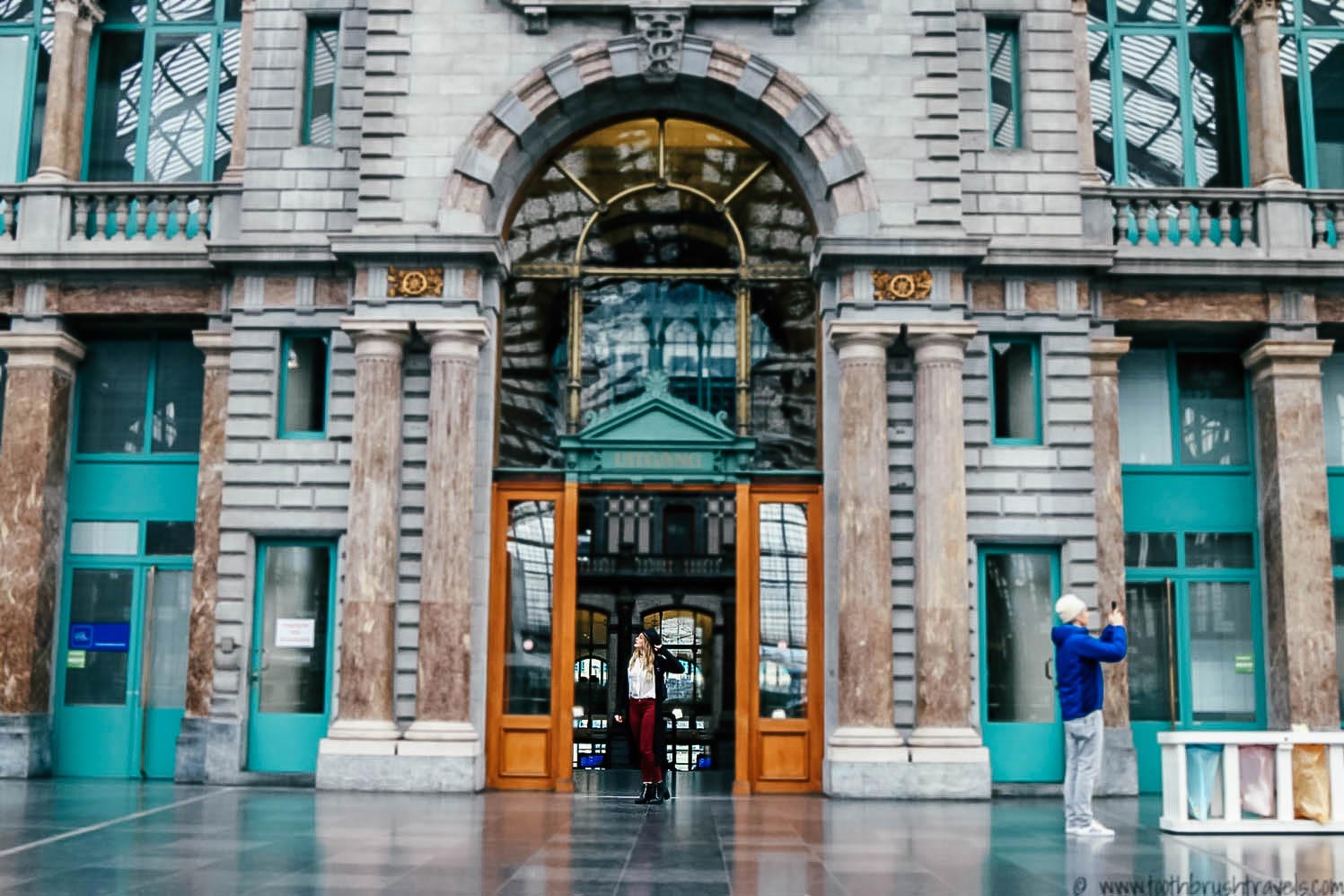Walking into Antwerp Train Station blew my mind.
Something which I’m sure you can agree is rare to say about a train station.
Yet Antwerp Train Station did exactly that. I mean, you can see why:
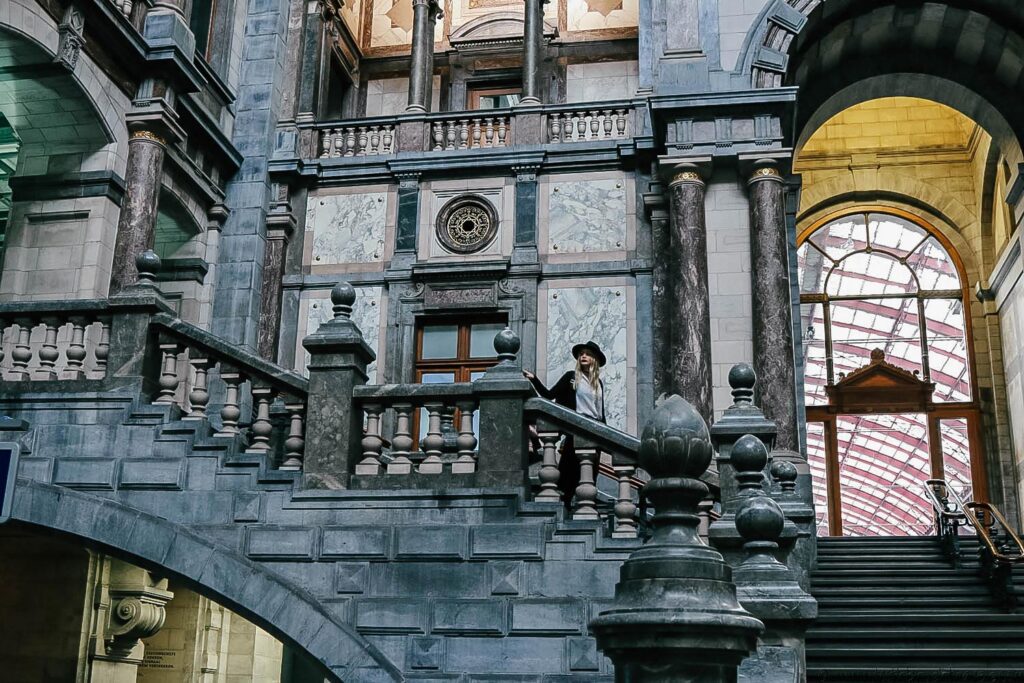
I can honestly say that when I visited Antwerp Train Station, it was the first time that I’ve ever been excited to visit a train station. I mean sure, train stations can be exciting as they typically take you to some other place. But the stations themselves are usually drab, tired and not very exhilarating places to be. But Antwerp Train Station? Well, that’s a different kettle of fish. Because Antwerp Train Station looks like this:
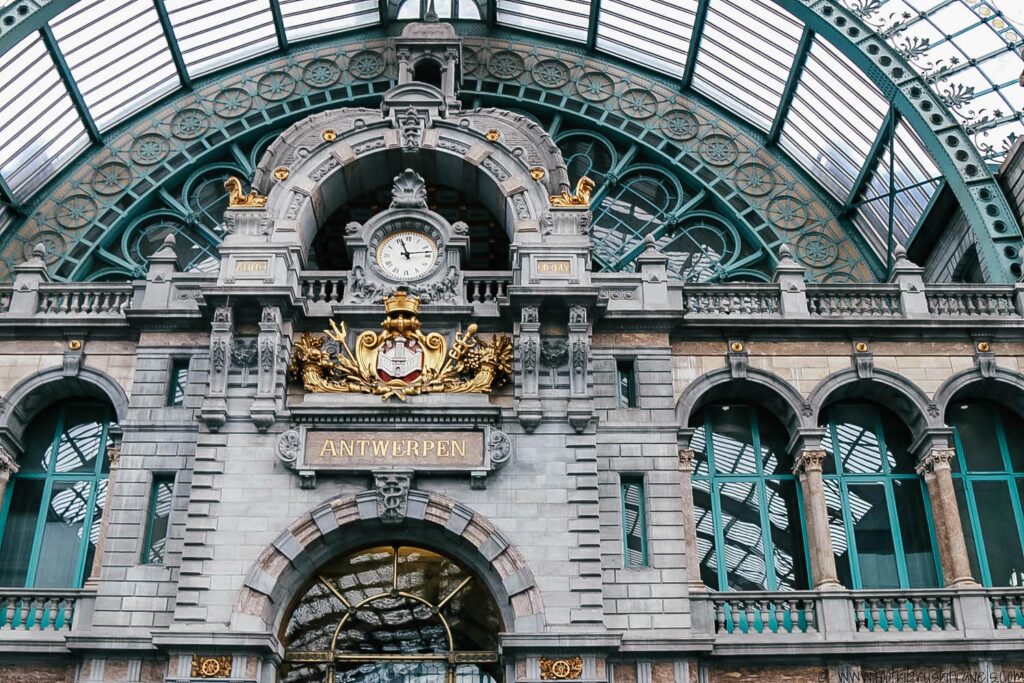
Definitely not your typical station!
It’s worth pointing out at this point, that even though this post is called Antwerp Train Station, it’s technically not a train station. It’s a railway station. But because everyone refers to it as a train station and it feels more natural to call it that, I’ll be sticking with it. Even though technically, it’s wrong. (Nikki: tell your dad, I’m sorry!)

Anyways.
It feels weird to admit this out loud on screen, but I wasn’t visiting Antwerp Train Station to catch a train. I was there to *whispers* look. I know, I know. How very “Sheldon Cooper” of me. But it turns out that architecture will do that to a girl.
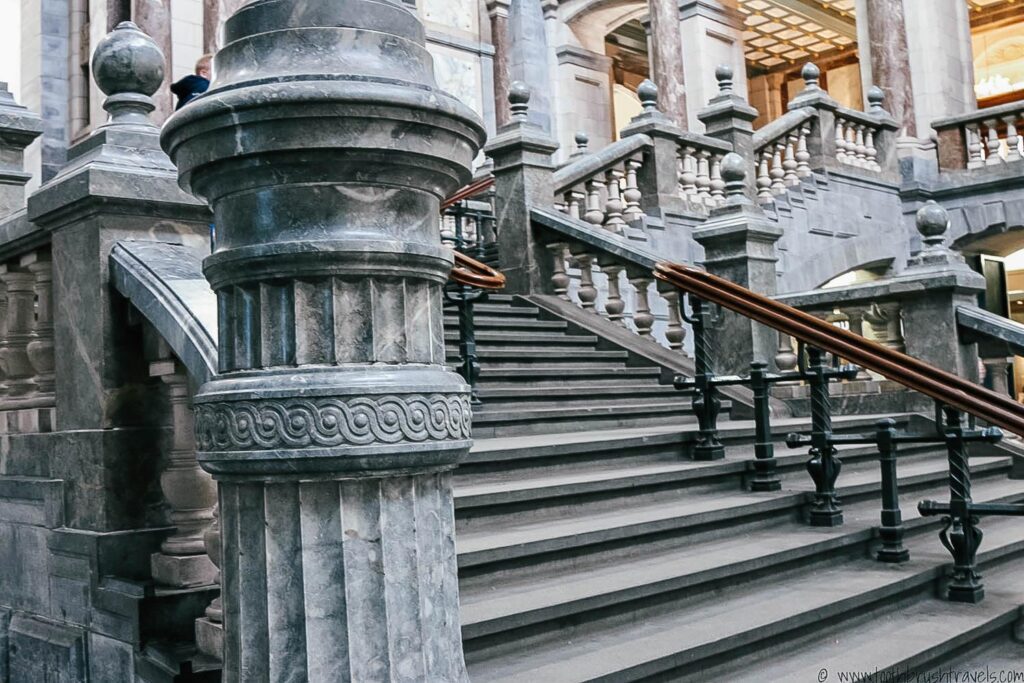
You see Antwerp Train Station was built back in the 1800’s and, as a result, has a distinct Belle Époque type of vibe. Created with a combination of marble halls, columns, and steel-framed glass, the design is timelessly beautiful and for decades it was known as “the railway cathedral” due to the striking nature of the space.
The station itself is made up of four floors, with two levels situated underground for routes that pass between Amsterdam and Brussels, the main floor which houses the lobby area, and the top track which runs the regional train routes between Ghent and Bruge—making Antwerp Train Station incredibly well-connected. Something which no doubt played a major role in the city’s trading past.
It felt weird wandering through a space that was used by so many as a stop on their daily commute. I mean, can you imagine standing in an airport just to look? Probably not. It’s a bit weird. Yet this is how I found myself in Antwerp Train Station. Wandering around like a lost soul with my chin pointing to the ceiling as I took it all in.

The first station was erected back in Belgium’s railway heyday and was originally a wooden structure, before being replaced by a newer design which included a steel roof. It was designed by Clément Van Bogaert—an engineer who worked his way up to Chief Engineer of the State Railways and was in charge of giving the terminus the signature platform roof and in 1896, Clément Van Bogaert received a knighthood when he was crowned as a knight of the Order of Leopold.
Impressive, eh!
An assortment of wood, iron, glass and steel were used to create the space and with the train hall standing at 44 metres high, it was an impressive feat, but the height was necessary due to the smoke from the steam locomotives.
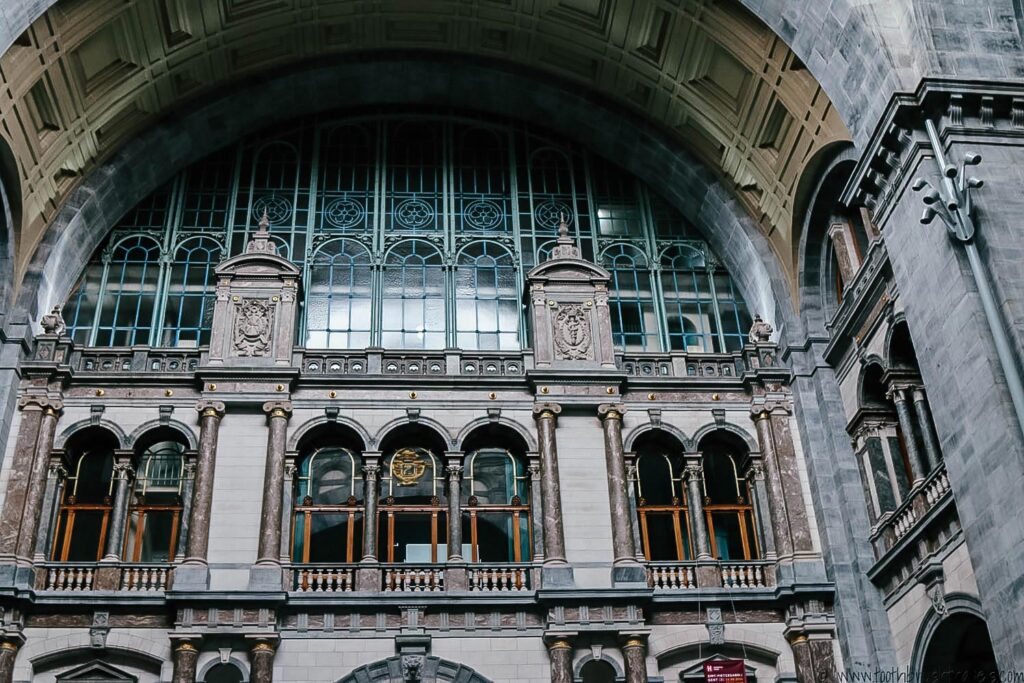
This too was replaced and the design of the Antwerp Train Station that you see today is the culmination of different designers’ work—with the neo-Renaissance stone clad terminus buildings and waiting hall dome designed by Louis Delacenserie, and the viaduct into the station designed by Jan Van Asperen. Something which King Leopold II is to thank for, as he felt that Antwerp deserved a more prestigious station, one that could symbolize Belgium’s pioneering role in the railway industry.
Over the years, Antwerp Train Station has undergone many changes and whilst the eclectic mix of styles work together harmoniously, due to the many influences in Delacenserie and Jan Van Asperen’s designs it’s hard to attribute a particular style of architecture to it. Not that not being able to label a style truly matters. What matters is that it’s really rather beautiful, and there are still pieces of the past which can be seen today. Like the wave-distortion in the roofing of the hall which was caused in World War II by the impact of V-2 rockets.

Since then, Antwerp Train Station has gone through deterioration, restoration, renovation and expansion, but fortunately never demolition. Although in the mid-twentieth century it came pretty close, due to the levels of deterioration it faced. With safety concerns looming the station was closed on the 31st of January 1986 and reopened in September as a safer structure, avoiding demolition partly due to clever use of materials. Such as using polycarbonate sheets instead of glass as it’s 40% lighter and has more elasticity.
Antwerp Train Station has undergone numerous renovations and additions, with the latest expansion project finishing in 2009. But the essence of the station has remained the same throughout the years, and in 2014 it was named as the most beautiful railway station in the world by British-American magazine, Mashable.
Something I assume, we can all agree with!
